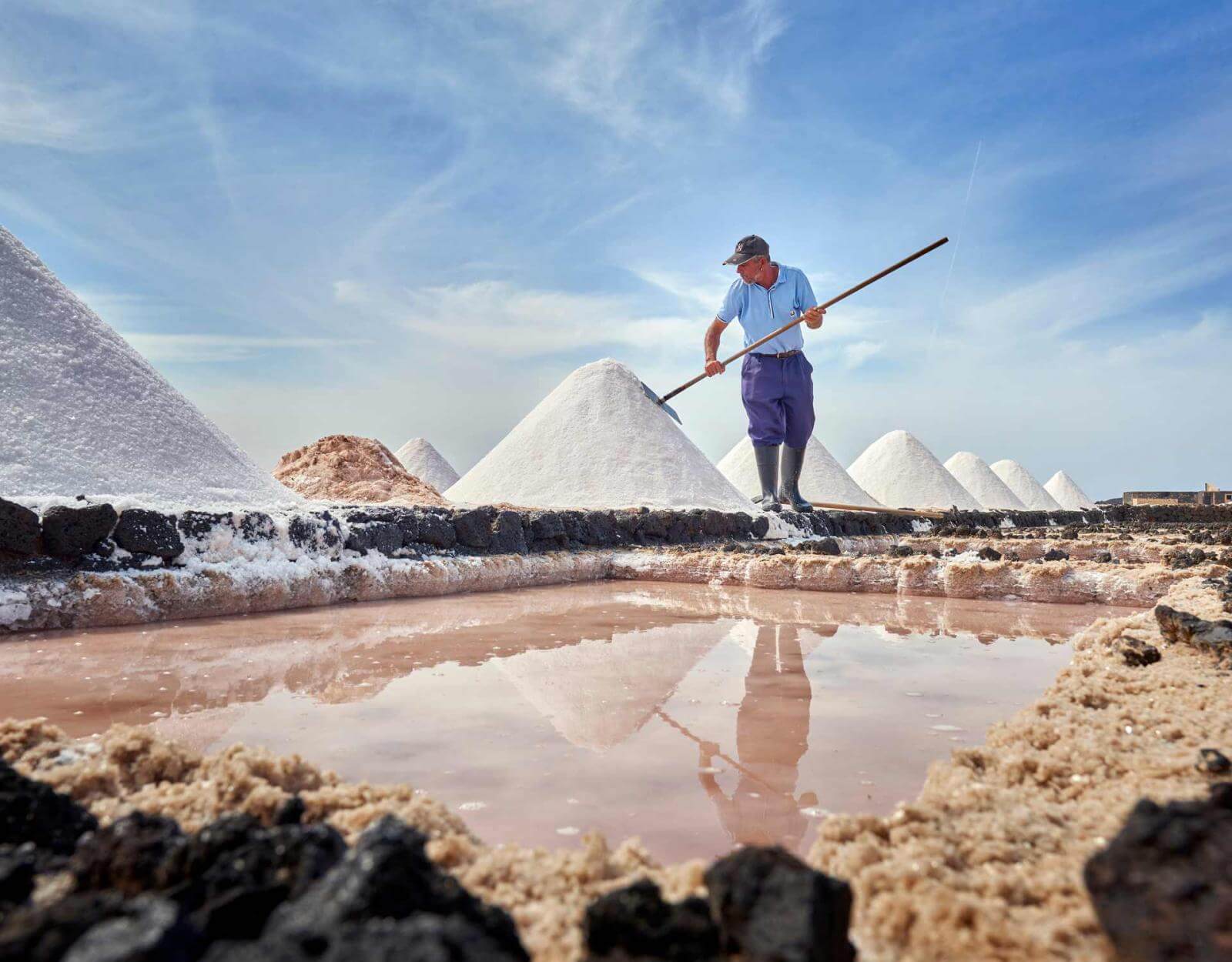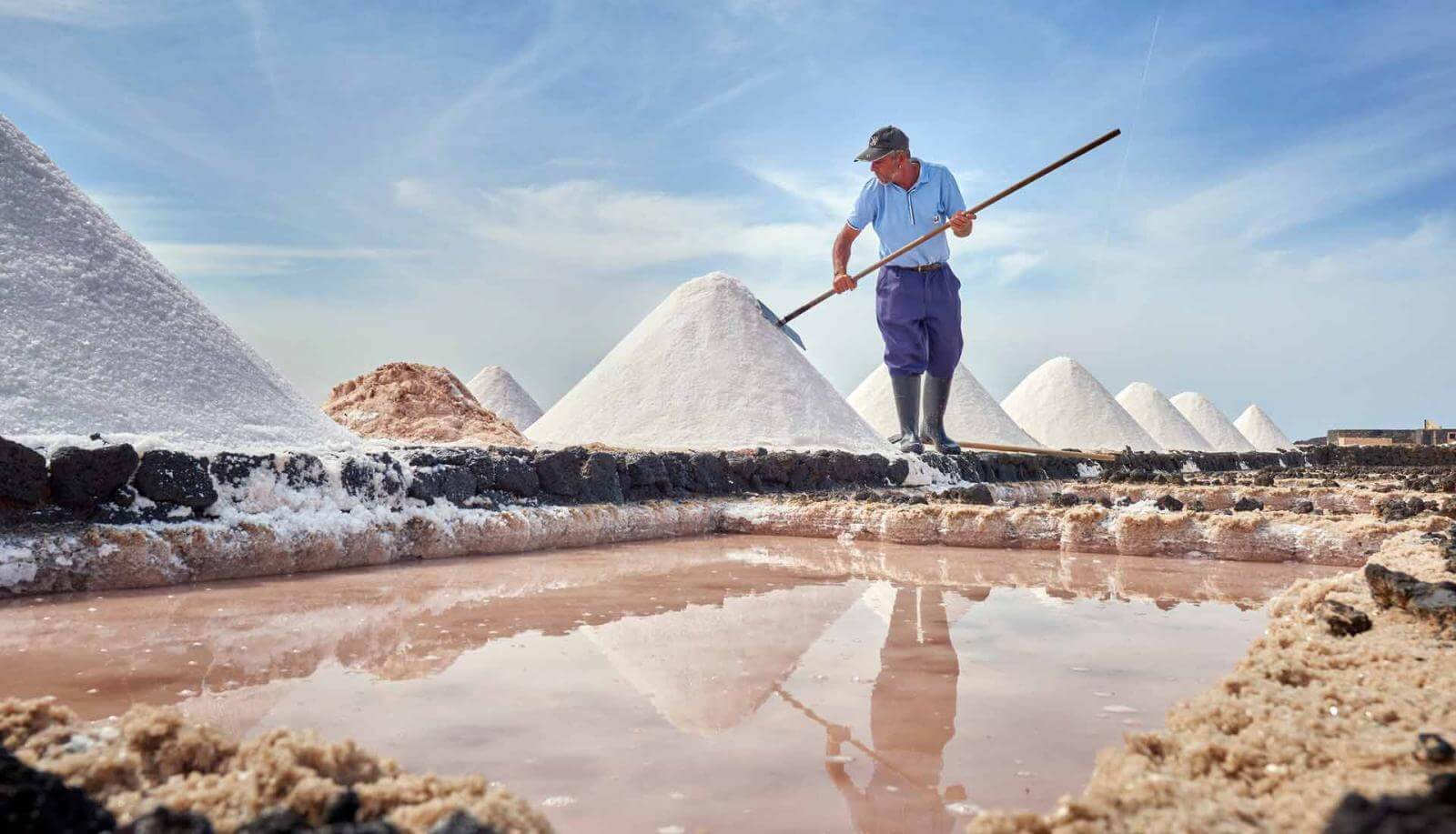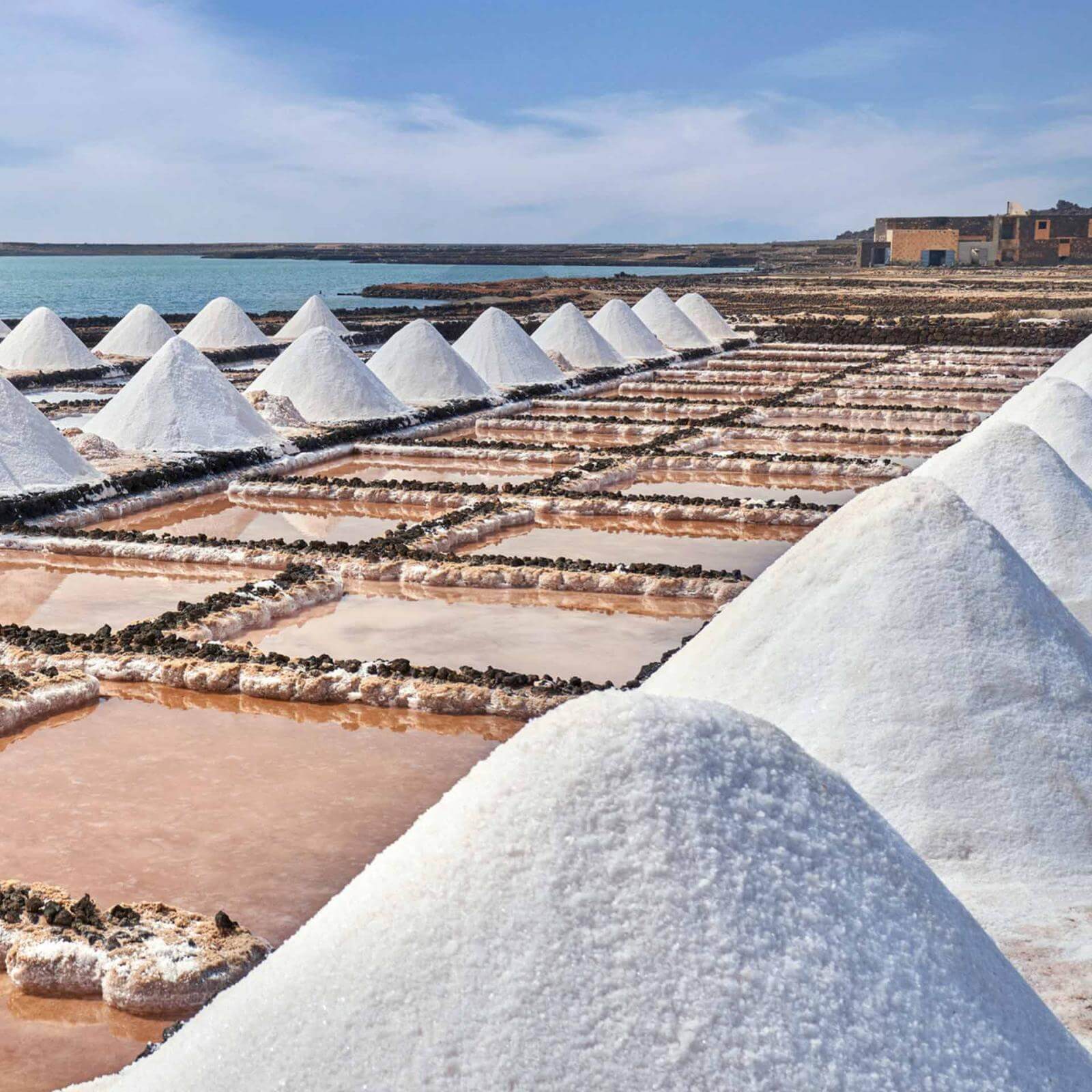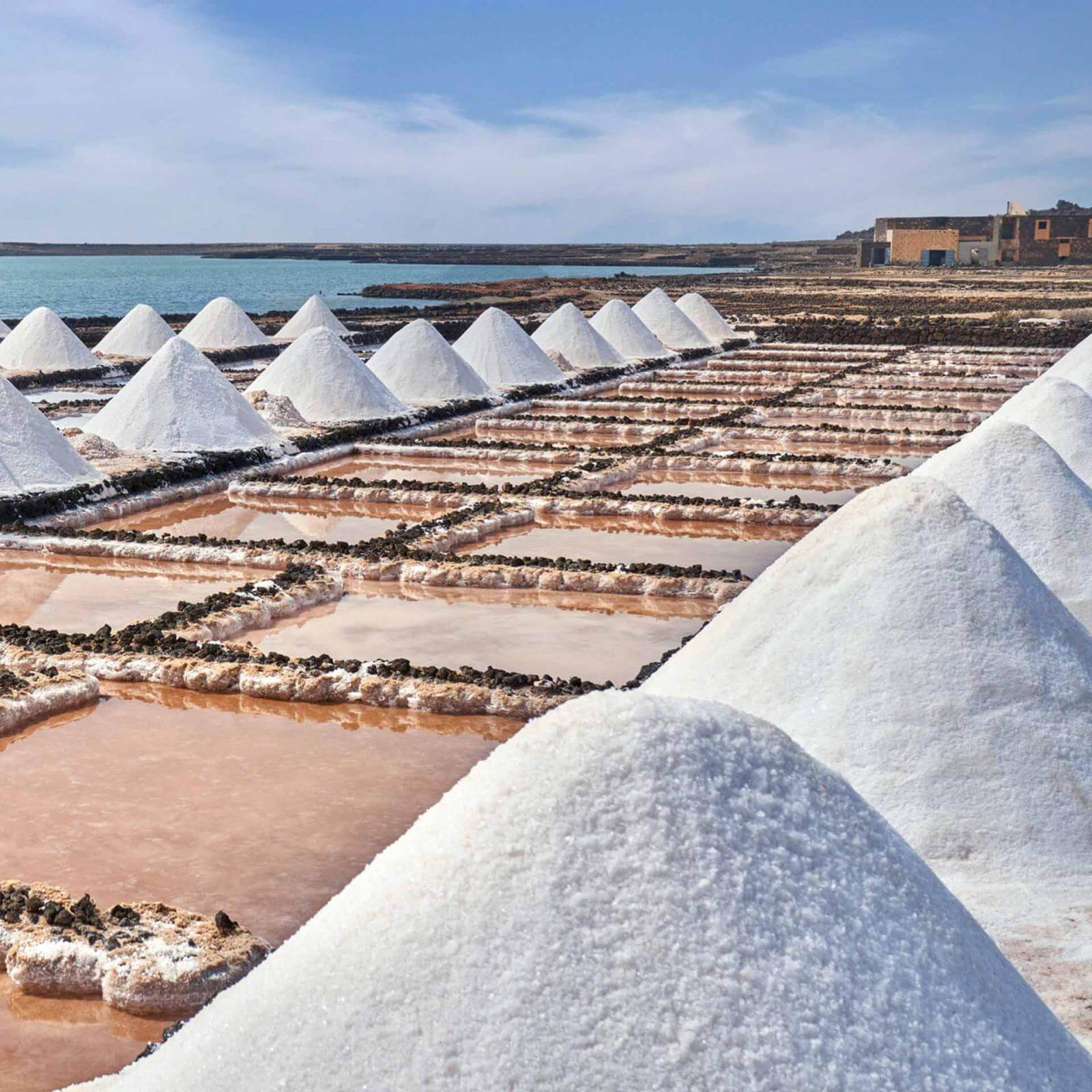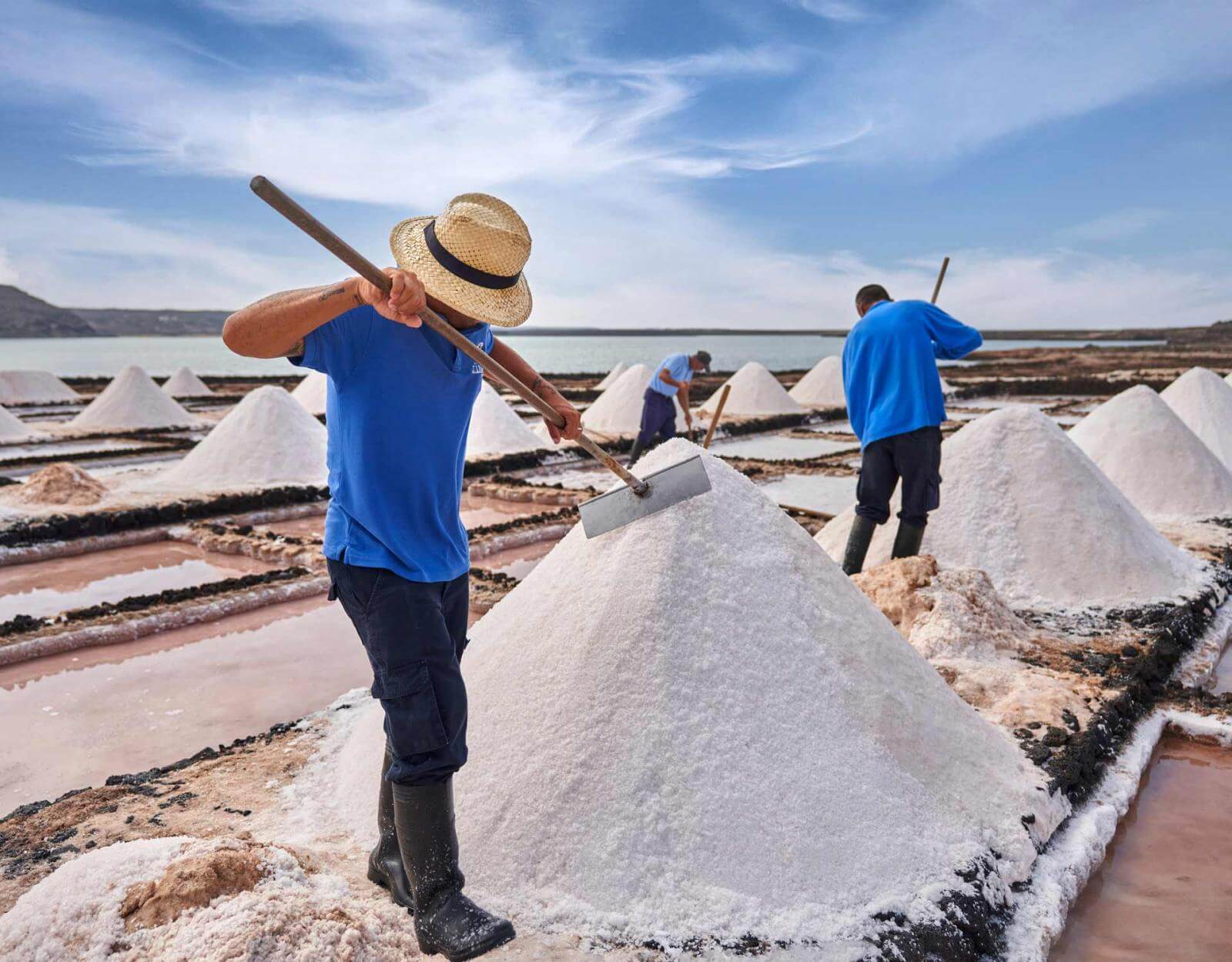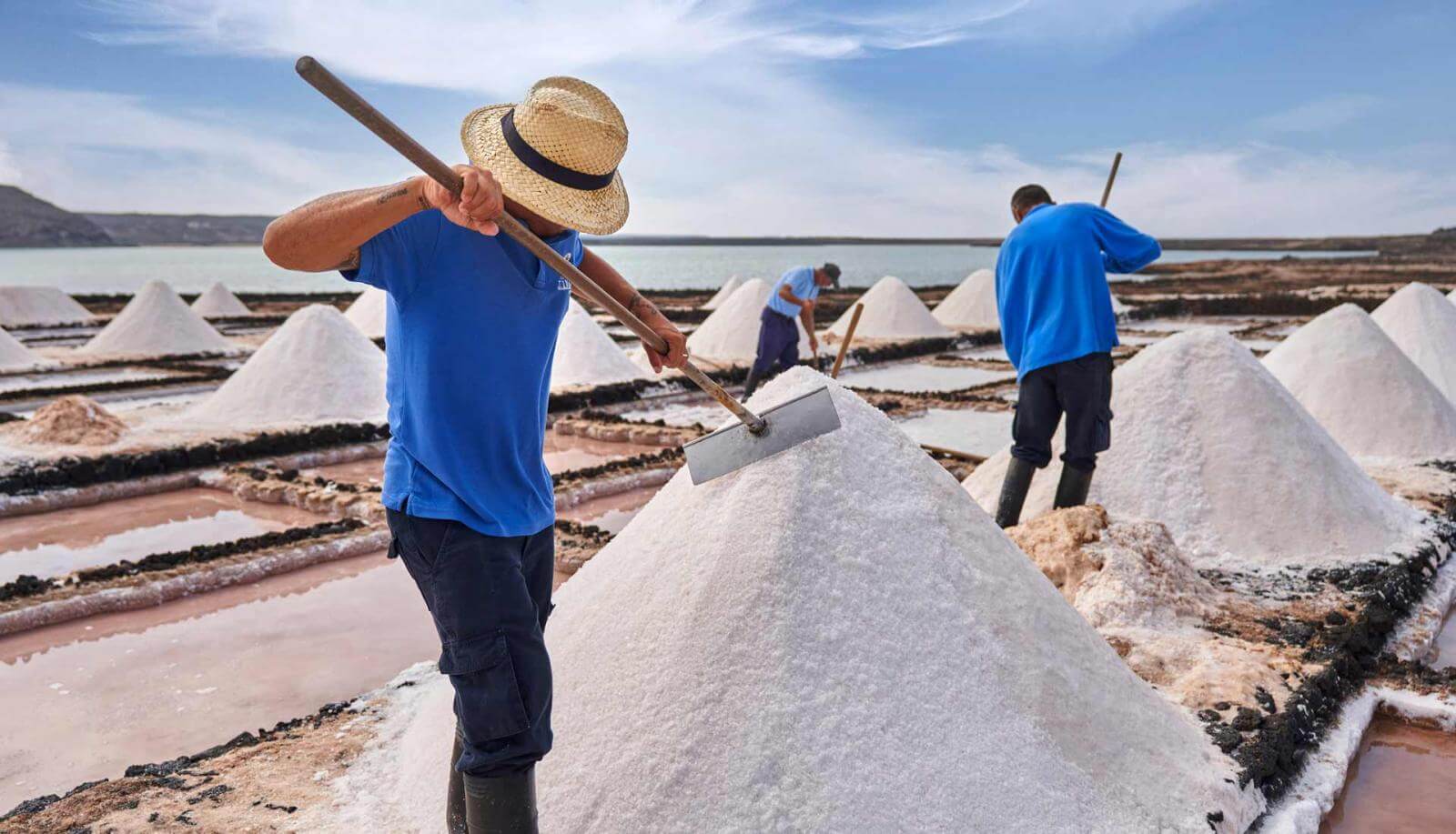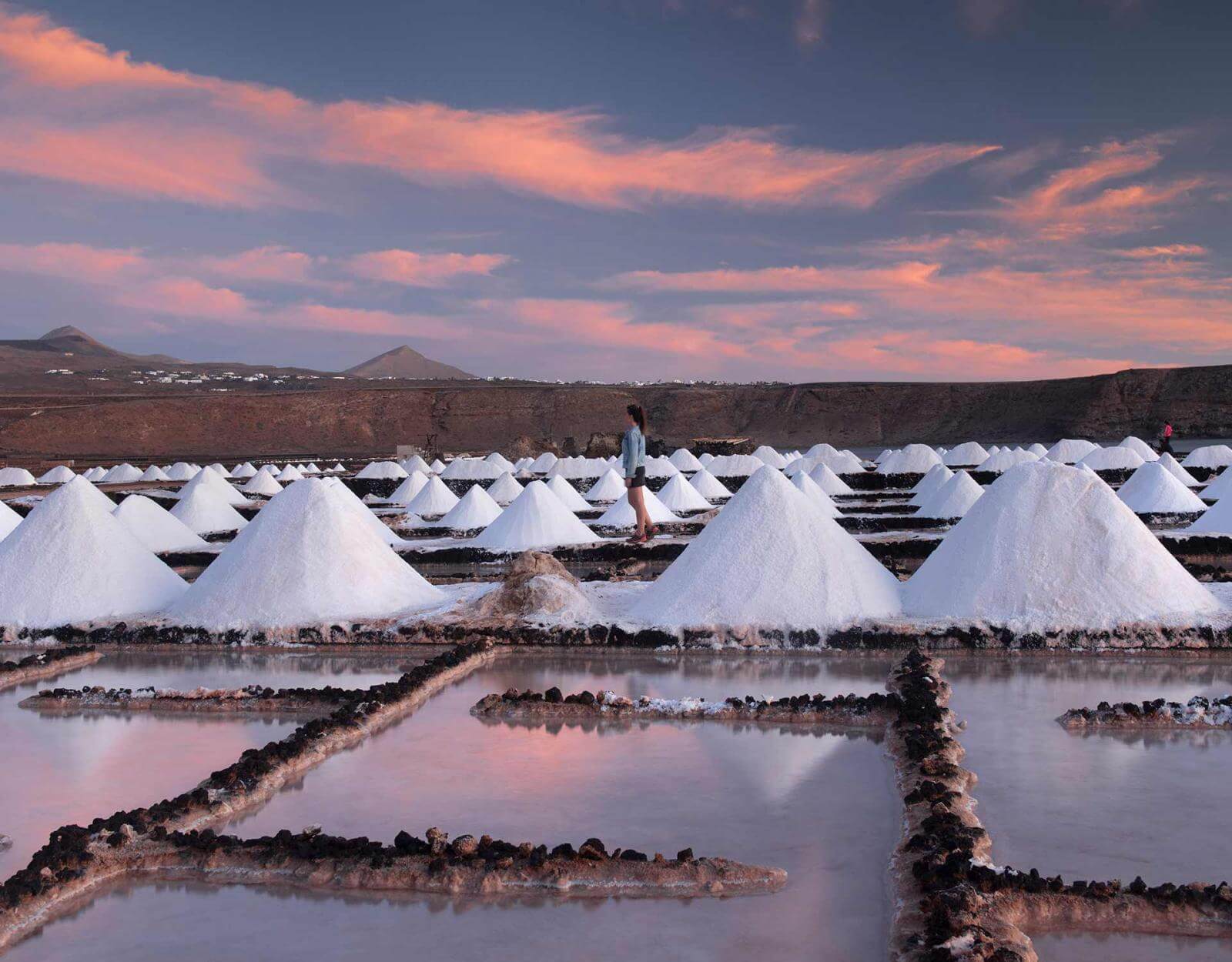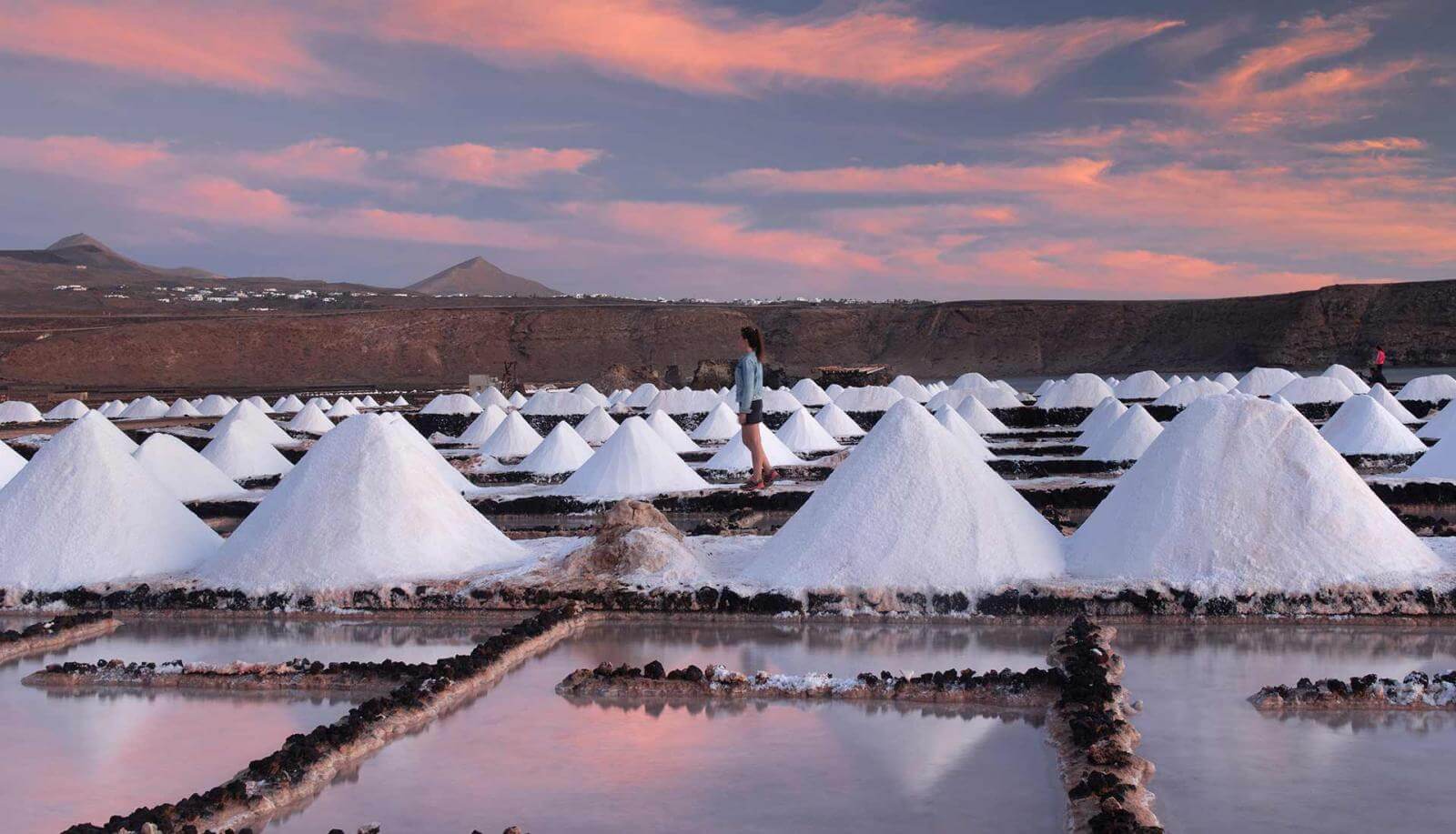The quality of the waters that bathe the Canary Islands and their privileged geographical location have gifted us a product as valuable as it is esteemed, throughout history: salt. The first settlers, the indigenous people, harvested salt in the ponds along the coast. This activity has continued ever since, both in the ponds and in numerous saltworks, creating salt gardens of immense historical, scenic and environmental value. Virgin sea salt and flower of salt are the expression of this work carried out using traditional techniques, turning this product into the white gold of the Canary Islands.
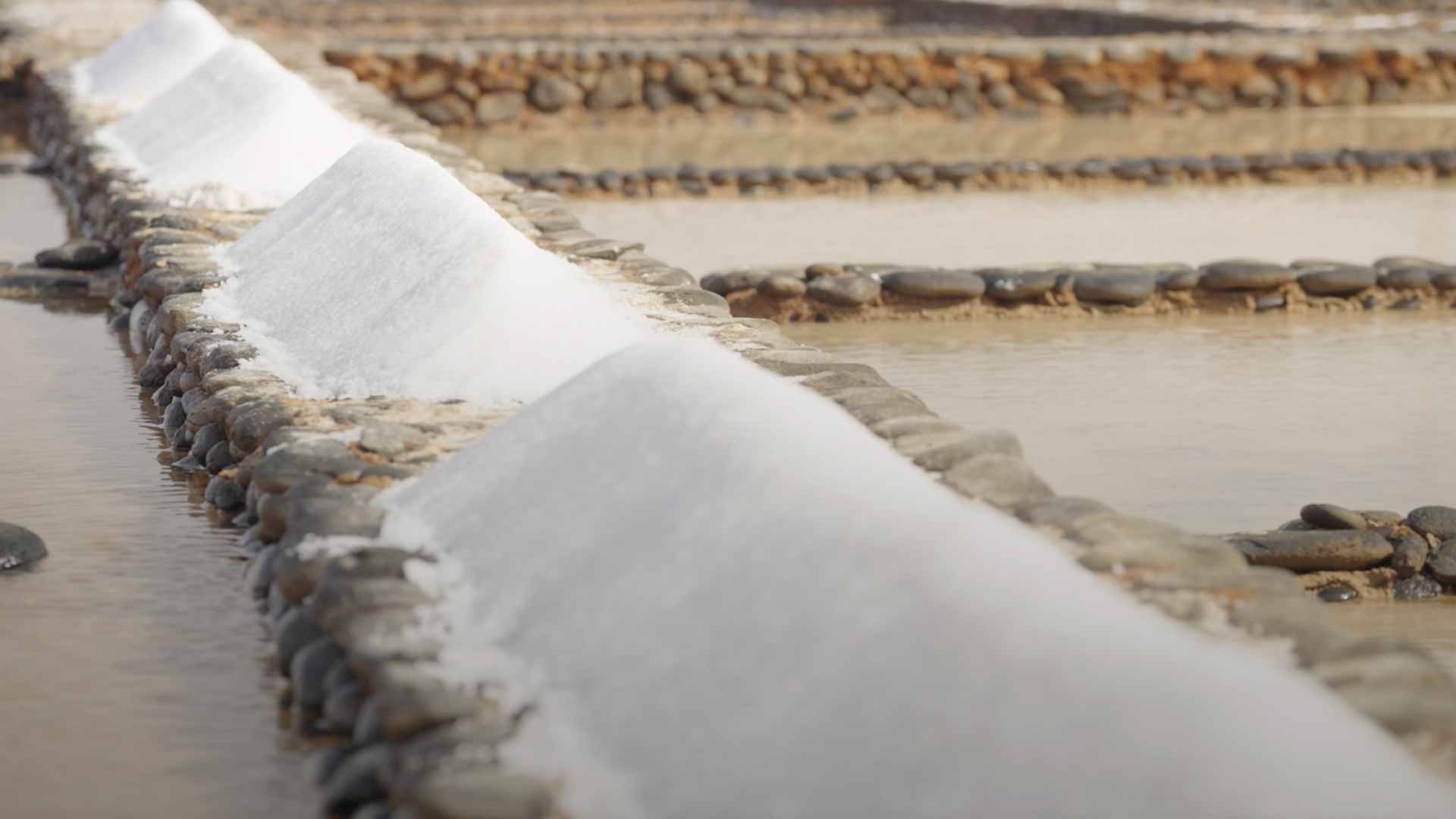

The saltworks of the Romans
Ever since the Neolithic period, when farming and livestock husbandry emerged and human beings created the first sedentary settlements, salt has been a necessity for preserving foodstuffs and indeed for the diet of these primitive societies. In the age of Rome and its Empire, the distinction was already made between natural salt, which they obtained from mines or deposits close to seas or lakes, and salt obtained by warming the water of the salinas, or saltworks. The latter was known as sea salt, and was highly valued and used as currency: salary.

In the Canary Islands, salt was a prized asset which the first inhabitants harvested from the ponds of rocky coastal areas, when the water that splashed up during high tide on rough days evaporated. Those same ponds have remained in use to this day, and some families still go and gather salt to meet their domestic needs on islands like Lanzarote, Fuerteventura, Tenerife or El Hierro.
Salt from ponds and salt from saltworks
In the 15th century, after the conquest by Castile, the salt-producing culture of southern Spain and Portugal arrived to the archipelago, joining the salt from the ponds – or sal de charco, as Canarians call the salt harvested from the reservoirs along the coast –. It was at this point that saltworks were built in order to obtain sea salt. The first saltworks date back to 1500, when in Lanzarote, Sancho de Herrera y Ayala had the Salinas del Río built, in what was an old saltwater coastal lagoon in the north of the island.
The impressive Salinas de Janubio
Over the next few centuries, the salt-producing activity on the Canary Islands extended a landscape comprised of evaporation ponds and crystallization reservoirs, with the “old clay” kind of saltworks, brought in from Cadiz and Portugal. These are characterised by small trenches with tamped clay bottoms where the salt crystallises, and helped develop an industry that was to experience its golden age in the first half of the 20th century, supplying and meeting the needs of the burgeoning fishing activity on the Canary-Saharan bank and its salting industries.
The finest example of salt production on the Canarian coast is expressed through the impressive Salinas de Janubio, which cover an area of 450,000 m2 (the largest on the archipelago by far). They were built around the year 1890 following a new design developed by the salt producers of Lanzarote: a new clay saltworks lined with stone, incorporating innovations in the layout, which improved the yield of the old clay saltworks.
Why is it the best salt?
The key to the superb quality of Canarian salt is that it comes from intensive traditional saltworks with small reservoirs that can produce up to 10 or 15 harvests a year, salt with a much smaller grain size and a higher content of trace elements (calcium, magnesium chloride, potassium, iodine and manganese). It is also less dense and milder than the salt from the extensive continental saltworks, which have large reservoirs from which the salt is collected once a year.

Experts in sea salt, who have studied and analysed the salt produced in the Canary Islands, say that the archipelago has the most mineralised salt crystal on the planet. When cooking food with this salt, it dissolves faster and is integrated better. It also favours the finish of cuisine and dishes because it lends them a crunchiness that is difficult to find even in the varieties of so-called “flower of salt” from the Peninsula.

A gourmet product in a landscape of great biodiversity
Obtaining this level of quality in the salt calls for great effort and year-round work in the small reservoirs that make up the labyrinth of the traditional Canarian saltworks. The work carried out in this divided architecture of reservoirs means different qualities of salt can be packaged: virgin sea salt, flower of salt, salt rocks, salt flakes and even wet sea salt packaged in its own brine, ideal for fish, seafood or rice dishes.
The white gold of the ancient Canarian fishing industry is also reflected in the landscape of the Islands. Human intervention, in the form of construction of the saltworks, far from affecting the natural environment, has created some extremely interesting ecosystems because of the biodiversity they generate, thanks to their integration into natural spaces that are protected due to their singular flora and fauna, which are adapted to hypersaline environments.



